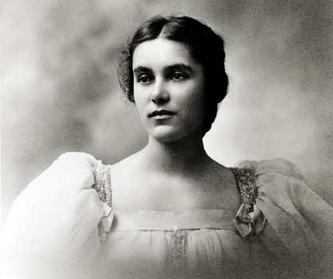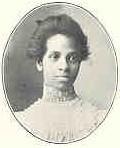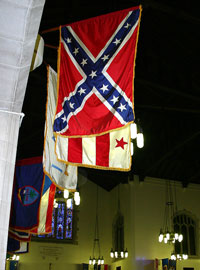For all the research that shows that the system must change to accommodate boys’ needs, it’s shocking that more educators and policymakers aren’t addressing the problem — or even talking about it.Certainly, the press hasn’t discovered the issue in mass yet. So the public is largely unaware of how bad the problem is — and thus, does not pressure politicians to do more.
But I suspect that it’s also because neither the right nor the left like this issue. Liberals have focused so much on women’s disparity, it’s not politically correct to focus on boys.
And conservatives who argue that gender does not or should not matter — and who successfully helped pass Michigan’s ban on affirmative action in certain public programs and institutions — hate the fact that the programs that would help boys catch up in college-going are essentially affirmative action.
That’s a terrible shame. Now that boys need affirmative action, at the university level and earlier, it’s not there for them.
–Amber Arellano, in her May 7th column for the Detroit News
Detroit News columnist Amber Arellano believes that men and boys should be the next group to be targeted with a comprehensive affirmative action program. Like reporters for Newsweek, Time Magazine, BusinessWeek, and other mainstream newsmagazines, Arellano is disturbed by the fact that girls now outnumber boys on a number of U.S. college campuses.
I’ve read a number of articles on the subject of young males’ perceived “failure” relative to girls, and I remain skeptical. It’s not that the statistics quoted by journalists like Arellano are inaccurate. Indeed, all of Arellano’s facts are irrefutable. Girls are doing better in school that boys are; girls are applying to and getting accepted into college in greater numbers than their male classmates; and, in the end, young women are graduating from college at a higher rate than young men.
All of the bits of evidence that Arellano offers to support her assertion that boys are underachieving relative to girls is true. But these facts have, to a greater or lesser degree, always been true. Girls have always done better in school than boys have. They have always been more likely to turn in their assignments on time, to score well on assignments and classroom exams, and to graduate, from both high school and college. Society has opened up sufficiently, however, that girls’ greater school success is now reflected in greater admission rates for girls at selective colleges and universities, greater admission rates to doctoral programs, and dramatically increased rates of admission to MBA, medical, and law programs.
Gone are the days when academically talented girls would be discouraged from prestigious careers like medicine and law. Gone are days when the nation’s most selective private colleges and universities were closed to women. Today’s guidance counselors are encouraging their female students to set the same goals as their male students, to take the same college entrance exams, and to apply to the same colleges and universities that past generations of advisors would have discouraged their female students from even considering.
As a result, girls’ greater maturity and focus at earlier ages, and girls’ substantially lower investment in forms of rebellion and resistance that would endanger their chances for academic success (troubled girls are less likely to be incarcerated, to commit violent crimes, or to drop out of school) are being rewarded with greater rates of acceptance into college, higher grades once there, and graduate school acceptance rates outstrip their male counterparts.
I do not believe that today’s teachers are biased against boys. I do believe, however, that teachers are less biased against girls that they once were. Today’s teachers are just as appreciative of enthusiastic learners, just as likely to reward strong students with academic and career mentorship, and just as intolerant of disruptive behavior as they were 50 years ago. Unlike the teachers of 50 years ago, however, teachers are just as likely to be supportive of strong female students with high aspirations as they are of strong male students with high aspirations. In education, with regard to gender, the playing field is finally, truly level. Teachers’ expectations are not tougher. It’s simply that without the academic glass ceiling looming overhead, girls — historically more enthusiastic about school that their male counterparts — are working harder than ever. Arellano’s interview with education researcher Kathy Stevens confirms this observation:
“We convinced girls that they needed to get serious about school so they can get good jobs and support their families,” says Kathy Stevens of the Gurian Institute, one of the country’s foremost training institutes trying to close the gender gap.
“And girls listened to us. They applied themselves. Boys even admit that girls study harder, they show up for class, and they turn in their college applications. A lot of boys are just not doing that.”
Today, for every 100 girls who graduate from high school, 96 boys graduate. For every 100 women who earn a bachelor’s degree, 73 men earn one.
–from Amber Arellano’s May 7, 2007 column in the Detroit News
Stevens and Arellano both believe that the absence of male teachers has contributed to a feminization of education and good grades in the minds of young boys:
Fewer male teachers means that boys increasingly view academic learning as feminine, which naturally they don’t want to be.
“This is important,” says Pollack. “Boys need to have male teachers and mentors, and they’re not enough of them.”
As the educational system has zeroed in on testing, language skills have become increasingly important, too. Boys’ brains are built differently. They take longer to learn to read and write than girls. As a result, they see girls mastering language skills first — and again, see learning as a girly thing.
–from Amber Arellano’s May 7, 2007 column in the Detroit News
This is a very strong analog to the association in some African American communities of learning with “acting white.” Black activists respond to this phenomenon by demanding that young Black children be taught the fallacy of that belief. I believe that the same course of action would be appropriate for those young men who associate learning with being “girly.” This, I believe, is where the solution to the gender achievement gap lies. In an rapidly-changing and increasingly techonological society in which communication skills are key, in a 21st century America in which there are fewer and fewer career opportunities for those who do not have very strong writing, reading, and critical thinking skills, parents are continuing to raise their sons with an understanding of maleness and masculinity more appropriate for a largely rural, largely agrarian society, like the U.S. in the 19th century.
While they are encouraging their girls to value learning, to respect the authority of their teachers, and to avoid unnecessarily risky and anti-social behaviors, many parents are either ignoring or subtly reward their sons’ disruptiveness, underachievement, anti-intellectualism, and generalized rebelliousness (in other words, rebellion not against a particular social injustice, but simply for its own sake). Hence boys and girls, though raised and educated alongside each other, are entering school with very different ideas about they value of the learning and knowledge acquisition.
This is reflected in the degree to which boys — especially boys in communities of color — are rapidly being outpaced by their female classmates in virtually all areas of education. Arellano’s wish for schools to change is misplaced. While schools can always improve, in this case it is parenting practices that need to transform. No amount of affirmative action for males will succeed until the values that young boys learn in the classroom — the value of education, the importance of sharing ideas, respect for one’s teachers and other elders, etc. — are reinforced at home.
Columnist Arellano mourns the fact that in the current anti-affirmative action political climate, few politicians would support gender-based preferences for males, but I think her grief is misplaced. The current achievement gap between boys/young men and girls/young women is the result of the recent and widespread retreat from two centuries of a ingrained gender bias in education and employment that functioned as defacto affirmative action for males. Another way of saying this is that society’s retreat from many forms of institutional sexism has resulted in what is effectively a national version of those anti-affirmative action measures that are sweeping the country, except that it is gender preferences for males that have been eliminated, by virtue of cultural shifts, as opposed to race-based preferences eliminated by legislation. Centuries of male preferences in education and employment have led us to where we are today, with boys lagging behind and educators scratching their heads. A new version of affirmative action for males — who have experienced no fundamental historical discrimination in this society or any other — is not the solution.
Posted by Ajuan Mance





